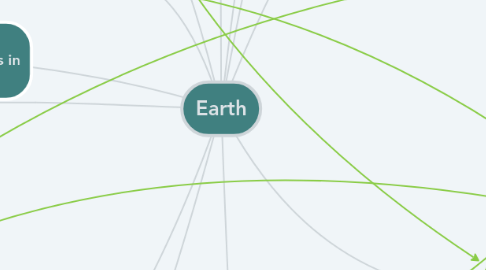
1. measuring time
1.1. Ice cores = extracted from glaciers shows long term climate reconstruction
1.2. Dendrochonology = looking at tree rings Light rings= growth, dark rings = dorment
1.3. Geochronolgy = sediment deposits ex volcanic ash
1.4. Carbon 14 = uses the 1/2 life and soil remains
1.5. Paleosis = fossil soils, evidence of sedimentation
1.6. Urban Context
1.6.1. Industrial histories, Natures of cities
2. Atmosphere
2.1. Environmental Lapse rate = 6.4 F degree decrease with every 1000 feet
2.2. Ozone Depletion-
2.2.1. 1985, 40% reduction in UV radiation
2.2.2. Montreal Protocal- 1987 called for the reduction in CFC's, total elimination of CFC by 2000
2.3. Greenhouse gases- amplify heat, needed for survival as it keeps the planet livable,
2.4. Carbon Sequestration- Organic Matter, Oil, Oceans build up carbon.
2.4.1. Reducing Emissions Deforestation Degradation (REDD)-gives market incentives. Issues: not paying attention to rights of locals, faulty carbon markets.
3. Geography
3.1. Human Environment Geography
3.1.1. Humans and the environment is a mutual relationship
3.1.2. Declensionist = HEG relationship marked by environmental damage
3.1.3. Environmental History
3.1.3.1. Alfred Crosbey- "The Columbian Exchange" - influenced generations of geographers and historians
3.1.3.2. Portmanteau biota- biological baggage that colonizers bring to new environments
3.1.3.3. Reconstructing past environments
3.1.3.3.1. Anthropecene - experiences in documents
3.1.3.3.2. Direct sources- first hand witnesses
3.1.3.3.3. Archival- documents of most common tools used in environmental history
4. Axis 23.5 degree tilt makes sun intensity vary place to place
4.1. Solstices= 12 hours of sunlight
5. Bio geography = study of patterns + relationships in biotic environments
6. Hazard
6.1. Cultural hazards- air, water, soil, food
6.2. Physical Hazards - drought, fire, tornadoes, hurricanes
6.2.1. West African Sahel - drought, first plant different types crops in dispersed fields, village counteracted high localized nature of convective rainstorm in the region.
6.3. Bio Hazards- bacteria, viruses, pollen
6.4. Early Hazards Geography
6.4.1. Gilbert F White- focused on flooding in the U.S., argued structural approaches to managing floods(dams)
6.4.2. Evolving Conceptions of Human Geography - any event needs a trigger
6.4.2.1. Individual Choice- position in society + structure of
6.4.2.2. Trigger a Disaster- technological disaster, human created
6.5. Risk Perception- shaped by value and power based constructions of individual and communities
6.5.1. Vulernability- short and long term effect of risk by soical, physical and economic factors.
6.6. Way people and communities recover short term, survive-normal
6.6.1. Adaptation longer term, extreme environments
6.6.2. Colonization- small scale = commodities, disruption of adaptive systems, economic, social, culture and political upheaval.
6.6.3. Decolinization- capitalist economic policies,
6.6.3.1. Neolibralism- environmental justice, "fair treatment of meaningful involvements
6.6.4. Climate Change
6.6.4.1. Global warming
6.6.4.1.1. Increase in Greenhouse gases
6.6.4.1.2. Depletion in freshwater
6.6.4.2. Rise in Sea level
7. Biodiversity
7.1. Genetic, Species and Habitat
7.1.1. Animals are becoming part of the human environment
7.1.1.1. Ties into human confict
7.2. Conservation
7.2.1. Endangered Species Act
7.2.2. Transboundary Conservation.
7.2.2.1. Africa
8. Population
8.1. Population will peak around 2050
8.2. Malthusian + Neo Perspectives: human pop grew at exponential rate while agriculture grew at a fixed rate per year, starvation and famine were natural check that brought the population back
8.3. Structuralist + Neo Perspectives: each person has a benefit of society , value of labor exceeded cost of substance.
8.4. Famine Food Access and Security
8.4.1. Famine does not equal growing more food.
8.4.2. Distribution of food is not equal
9. Environmental damage
10. Hydrosphere
10.1. Dew point = saturated air
10.1.1. Condensation
10.2. Water cycle Precipitation, runoff, infiltration, evaporation
10.2.1. Influenced by Human factors, pollution, irrigation systems, cities
10.3. 96.5% oceans, freshwater 2.5%, .9% other
10.3.1. Acesss to Water is uneven, clean water is more available in the global north rather than global south
10.3.1.1. Privatization of Water by companies makes water access more difficult.
10.3.1.1.1. Tragedy of the commons, water has been misused
10.3.1.2. Global North uses more water than Global south
10.3.1.3. Physical and Economic
11. Lithosphere
12. Biosphere
12.1. Human Activity
12.1.1. 17th Century
12.1.1.1. Colonization
12.1.1.1.1. Exploitation
12.1.1.1.2. Portmanteau bitoa = biological baggage that colonizers bring to new environments
12.1.1.2. God, Gold, and Glory
12.1.1.3. 1800-1st Billion population count
12.1.2. Early 1900's
12.1.2.1. Urbanization
12.1.2.1.1. Romantacizing the wilderness
12.1.2.1.2. Masculinity
12.1.3. 1960's & 70's
12.1.3.1. Pollution Issues
12.1.3.1.1. Middle class support
12.1.3.2. Cultural practices and behaviors
12.1.3.3. Environmentalism Rapid change in thinking about the environment
12.1.3.3.1. Rachel Carson wrote "Silver Spring" an activist on pesticides
12.1.3.3.2. Paul Ehrlich
12.1.3.3.3. Donella Meadows
12.1.3.4. First Earth Day April 22nd ( 1970)
12.1.3.5. Green Revolution: hybrid seeds, started urban ag, mixed ag systems
12.1.4. 1980's & 90's
12.1.4.1. International Union for Conservation on Nature
12.1.4.2. Earth Summit Rio 1992
12.1.4.2.1. Convention on Biodiversity
12.1.5. 2000's and beyond
12.1.5.1. Food, Agriculture, and energy efficiency are popular.
12.1.5.1.1. Idea of eating organic comes into place
12.1.5.2. World environmental agreements Paris Climate accord 2016, 97' Kyoto Protocol, 2009 Copenhagen
12.1.5.2.1. Green imperialism
12.1.5.3. Environmental Justice
12.1.5.3.1. local and urban,
12.1.5.4. Dams
12.1.5.4.1. Pros: power Cons: Damages local environment, water quality, fish popultion
12.1.6. Farming
12.1.6.1. Extensive ag system: limited labor
12.1.6.2. Intensive ag system Low inputs: labor, organic fertilizers High inputs: inorganic fertilizers, pesticides, mechanization
12.1.6.3. Agroforestry
12.1.6.4. Traditional Agriculture: high yields and inputs, nomadic herding
12.1.6.4.1. Dike, Aqueduct, Canal irrigation, Shaduf,
12.1.6.5. Industrial Ag: Global north, commercial, monocropping
12.1.6.5.1. Genetically modified seeds
12.2. Albedo Effect
12.2.1. Low albedo= most energy is absorbed into ground
12.2.2. High albedo = more energy is reflected + heating is slow

